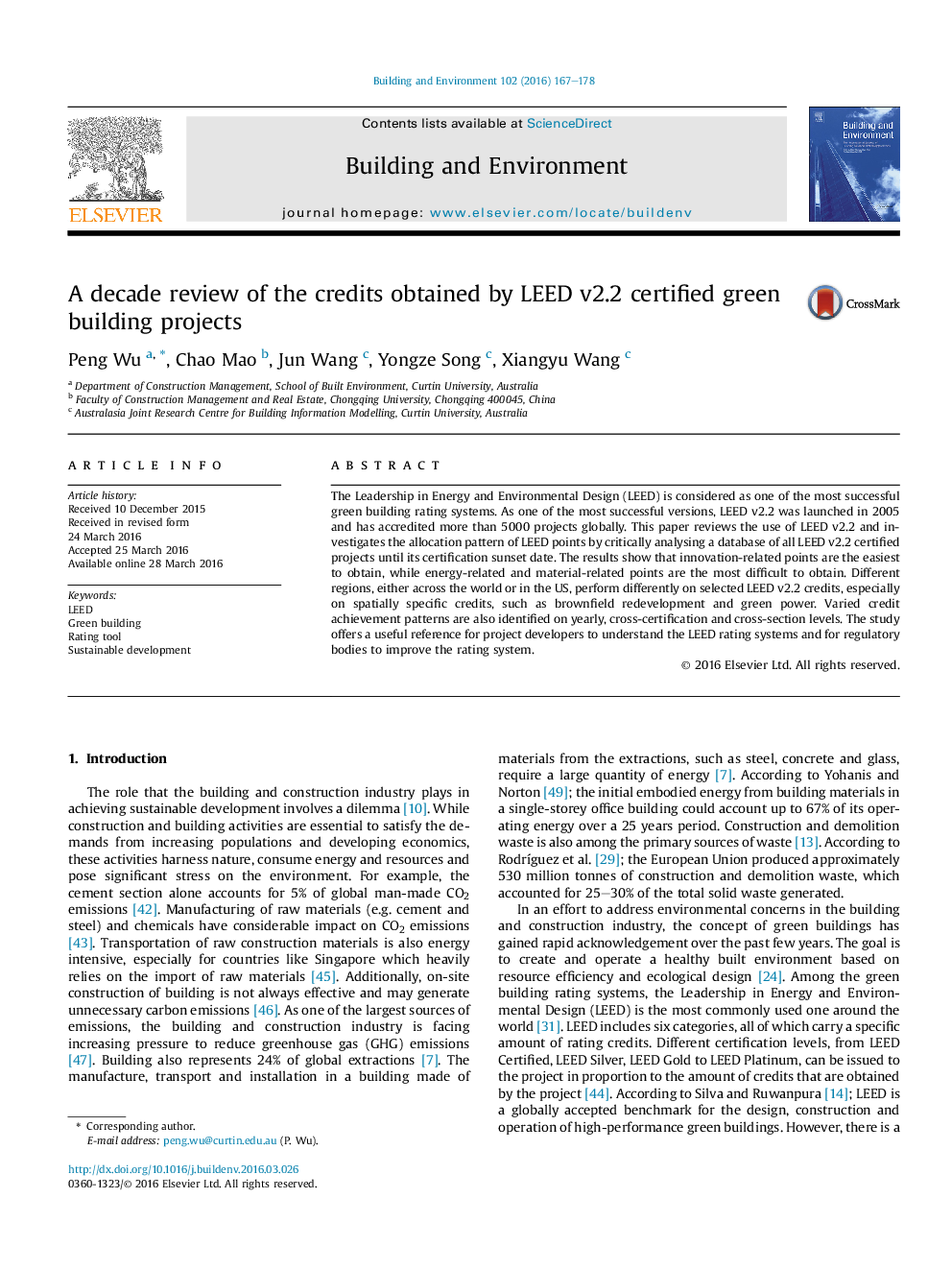| Article ID | Journal | Published Year | Pages | File Type |
|---|---|---|---|---|
| 6699296 | Building and Environment | 2016 | 12 Pages |
Abstract
The Leadership in Energy and Environmental Design (LEED) is considered as one of the most successful green building rating systems. As one of the most successful versions, LEED v2.2 was launched in 2005 and has accredited more than 5000 projects globally. This paper reviews the use of LEED v2.2 and investigates the allocation pattern of LEED points by critically analysing a database of all LEED v2.2 certified projects until its certification sunset date. The results show that innovation-related points are the easiest to obtain, while energy-related and material-related points are the most difficult to obtain. Different regions, either across the world or in the US, perform differently on selected LEED v2.2 credits, especially on spatially specific credits, such as brownfield redevelopment and green power. Varied credit achievement patterns are also identified on yearly, cross-certification and cross-section levels. The study offers a useful reference for project developers to understand the LEED rating systems and for regulatory bodies to improve the rating system.
Related Topics
Physical Sciences and Engineering
Energy
Renewable Energy, Sustainability and the Environment
Authors
Peng Wu, Chao Mao, Jun Wang, Yongze Song, Xiangyu Wang,
